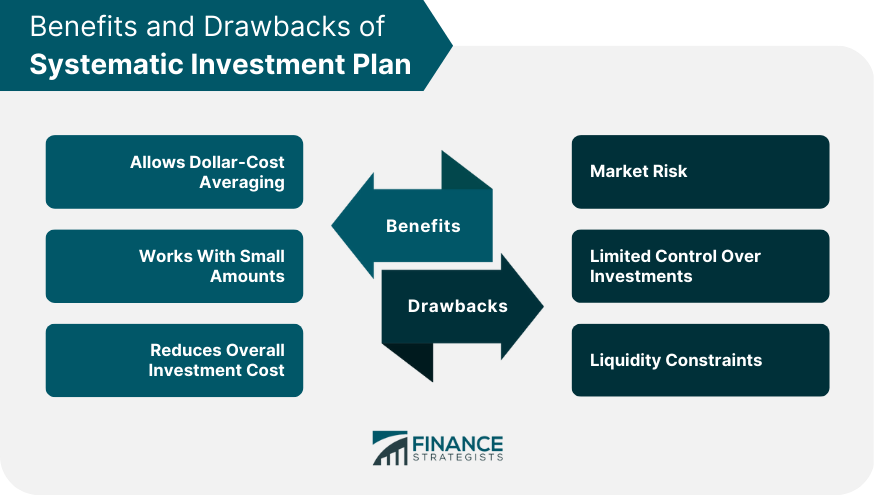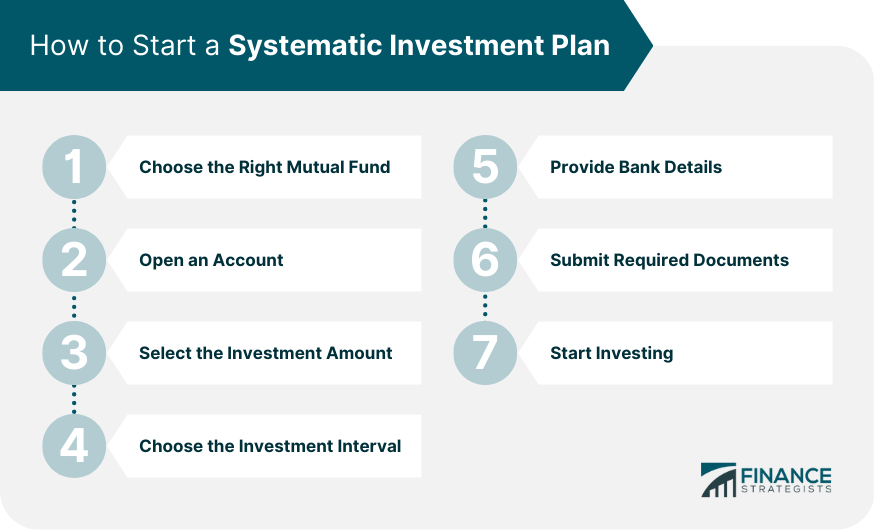Systematic Investment Plan (SIP) is an investment strategy in which an individual invests a fixed amount of money at regular intervals in a mutual fund or exchange-traded fund (ETF). The purpose of SIP is to enable individuals to invest their money in a disciplined and structured manner over a longer period of time. It is a popular investment option for those who want to accumulate wealth over the long term and also seek to minimize risks associated with market volatility. There are several key features of SIP that make it a popular investment strategy: SIP allows individuals to invest small amounts of money at regular intervals, such as monthly or quarterly. This makes it a convenient option for those who may not have a large lump sum to invest upfront but want to start investing regularly. Due to its systematic approach to investment, it enables individuals to invest consistently over a longer period of time. This can help in building wealth steadily and consistently. Systematic investment plans can be easily automated, which means that the investment amount is debited automatically from the individual's bank account. This ensures that the individual invests regularly and does not miss out on investment opportunities due to forgetfulness or lack of time. This can be made in a variety of asset classes, including equity and debt, and hybrid funds. This provides individuals with a range of investment options to choose from, based on their risk appetite and investment goals. SIP offers several benefits to investors: This is a strategy that involves investing a fixed amount of money at regular intervals. By investing the same amount at predetermined intervals. Investors can potentially reduce the impact of market volatility on their investments. This helps investors buy more shares when the prices are low and fewer shares when the prices are high, thereby potentially reducing the average cost of the investment over time. Systematic investment plans are an ideal investment option for individuals who want to invest small amounts of money on a regular basis. This makes SIPs a convenient and accessible investment option for everyone, regardless of their income or financial situation. By investing a fixed amount of money at regular intervals, investors can potentially benefit from dollar cost averaging and buy more shares when the prices are low and fewer shares when the prices are high. This can potentially reduce the average cost of the investment over time and provide a better return on investment. Additionally, SIPs may have lower fees and expenses compared to other investment options, which can also contribute to reducing the overall cost of investments. Some drawbacks of systematic investment plans include: The returns on systematic investment plans can fluctuate based on market conditions, and investors may experience losses during periods of market volatility. Although SIPs are designed to reduce the impact of market volatility over the long term, investors need to be aware of the potential risks involved and should have a long-term investment horizon. While investors can choose the mutual fund or ETF in which they want to invest, they do not have control over the individual securities or assets in the fund. This means that investors cannot customize their portfolios to their individual investment goals or preferences. SIP investments are typically intended for the long term, and investors may face liquidity constraints if they need to access their funds before the end of the investment period. Some mutual funds may allow investors to redeem their investments before the end of the SIP period but they may charge fees or impose penalties for early withdrawal. This can limit investors' ability to access their funds when they need them. Starting a systematic investment plan can be a relatively simple process, with a few steps that investors need to follow to set up an account and begin investing in mutual funds. The first step to starting a SIP is to choose the right mutual fund that meets your investment goals and risk appetite. Investors can choose from a variety of mutual funds that invest in different asset classes, such as equity, debt, or hybrid funds. Once the investor has identified the mutual fund, they need to open a SIP account with the mutual fund company or an authorized broker. This typically involves filling out an application form and providing necessary personal and financial information. The investor needs to decide on the amount of money they want to invest in the mutual fund. This can be a fixed amount or a variable amount, based on the investor's financial situation. Next, the investor needs to choose the investment interval for the SIP. This can be monthly, quarterly, or any other interval offered by the mutual fund. The investor needs to provide their bank account details to enable automatic debit of the investment amount for the systematic investment plan.. Documents must be submitted such as ID cards or address proof to authenticate their bank account details. Once the investor completes the above steps, the investment starts automatically, and the mutual fund company debits the investment amount from the investor's bank account at the chosen investment interval. Systematic investment plan is a type of investment product that allows investors to invest a fixed amount of money at regular intervals. SIPs have become popular among investors due to their convenience, accessibility, and potential for long-term wealth accumulation. Key features of SIPs include the ability to invest small amounts, automatic investment, and potential cost savings through rupee/dollar cost averaging. Systematic investment plans also offer a range of benefits, such as professional fund management, tax benefits, and potentially higher returns over the long term. However, SIPs are subject to market risk, limited control over investments, and liquidity constraints. To start a SIP, investors need to choose the right mutual fund, open an account, choose the investment amount and interval, provide bank details, and submit required documents. Working with a wealth management service can provide investors with access to professional investment advice, portfolio management, and personalized investment solutions which can improve their approach to systematic investment plans.Systematic Investment Plan (SIP) Overview
Key Features of a Systematic Investment Plan (SIP)
Allows Small Amounts
Systematic Approach
Automated
Asset Class Variety
Benefits of Systematic Investment Plan
Allows Dollar-Cost Averaging
Works With Small Amounts
Reduces Overall Investment Cost
Drawbacks of Systematic Investment Plan
Market Risk
Limited Control Over Investments
Liquidity Constraints

Starting a Systematic Investment Plan
Choose the Right Mutual Fund
Open an Account
Select the Investment Amount
Choose the Investment Interval
Provide Bank Details
Submit Required Documents
Start Investing

Final Thoughts
Systematic Investment Plan (SIP) FAQs
A systematic investment plan is a type of investment product that allows investors to invest a fixed amount of money at regular intervals in a mutual fund or exchange-traded fund (ETF).
Benefits of a systematic investment plan include the ability to invest small amounts, automatic investment, potential cost savings through rupee/dollar cost averaging, and professional fund management.
Drawbacks of a systematic investment plan include market risk, limited control over investments, and liquidity constraints.
To start a systematic investment plan, investors need to choose the right mutual fund, open a SIP account, choose the investment amount and interval, provide bank details, and submit required documents.
Working with a wealth management service can provide investors with access to professional investment advice, portfolio management, and personalized investment solutions to align with their goals, risk tolerance, and financial situation.
True Tamplin is a published author, public speaker, CEO of UpDigital, and founder of Finance Strategists.
True is a Certified Educator in Personal Finance (CEPF®), author of The Handy Financial Ratios Guide, a member of the Society for Advancing Business Editing and Writing, contributes to his financial education site, Finance Strategists, and has spoken to various financial communities such as the CFA Institute, as well as university students like his Alma mater, Biola University, where he received a bachelor of science in business and data analytics.
To learn more about True, visit his personal website or view his author profiles on Amazon, Nasdaq and Forbes.











